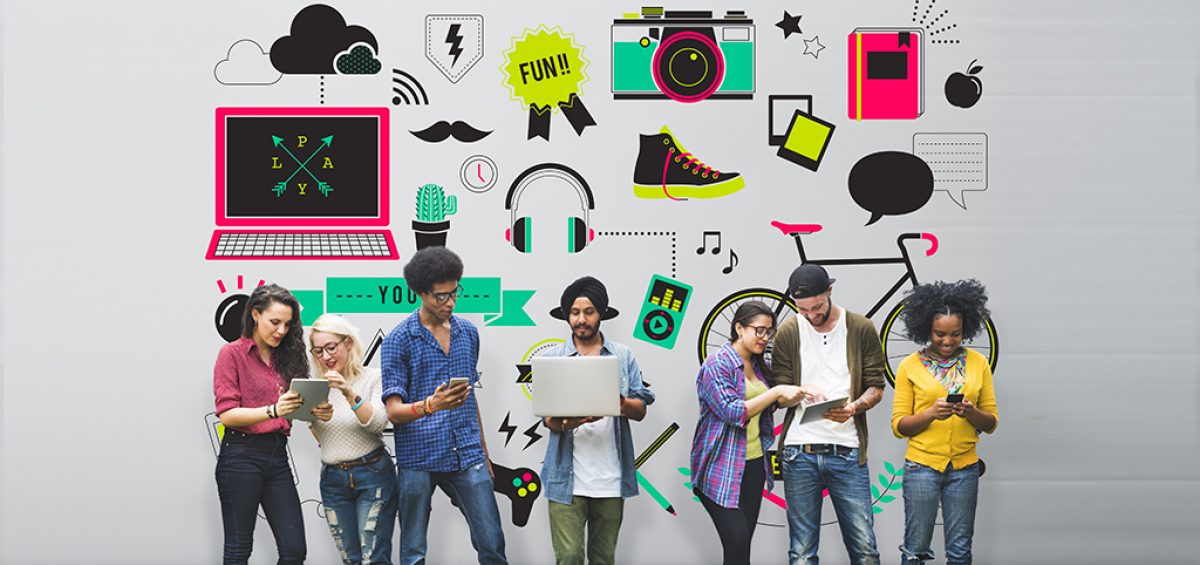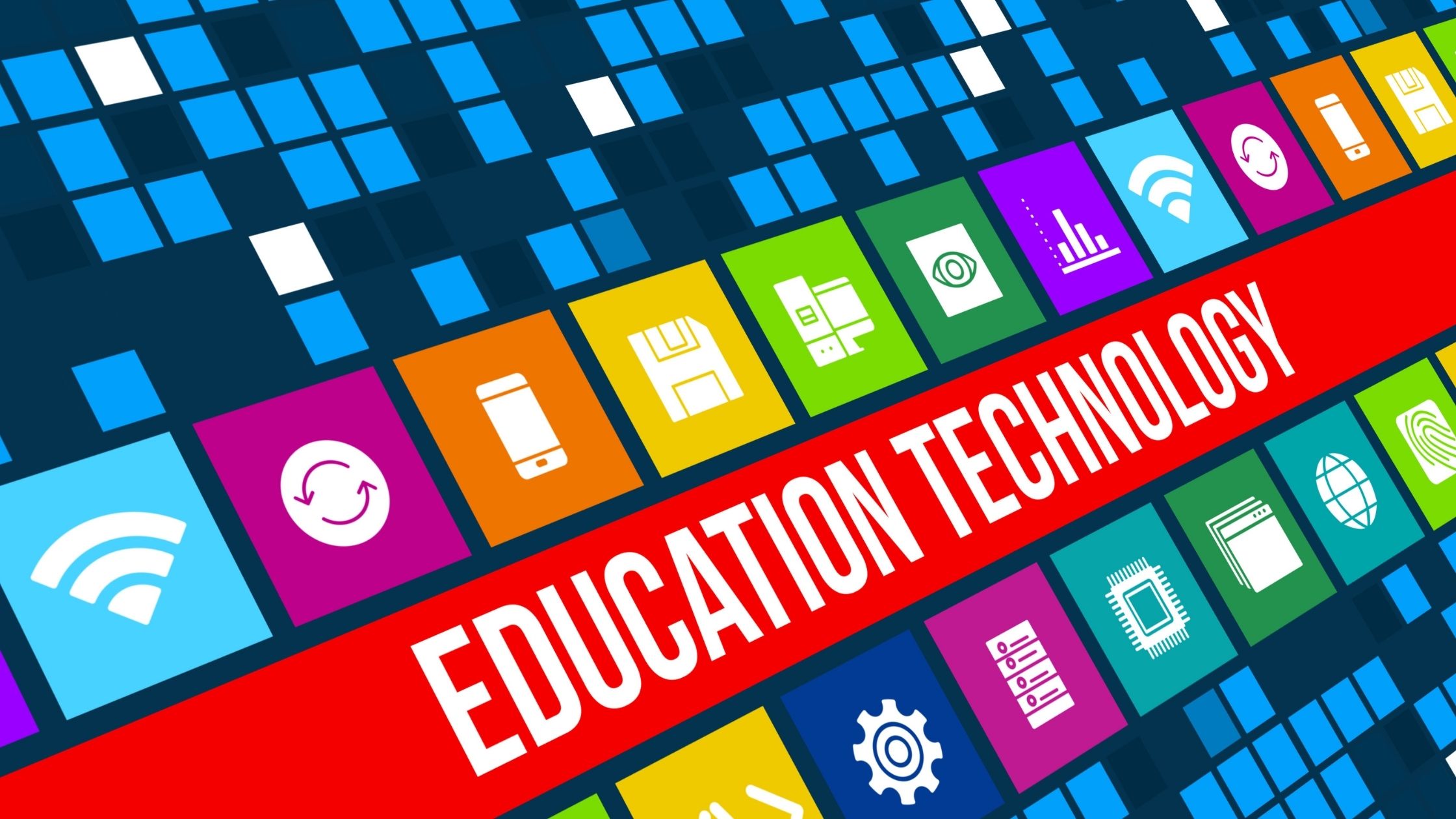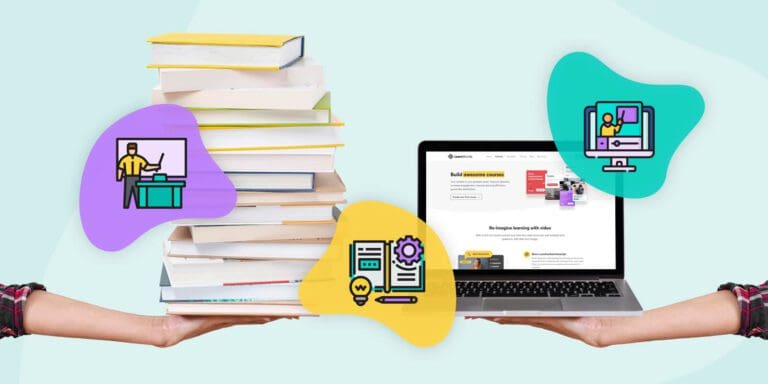Educational Technology Trends: Empowering the Future of Learning
As you dive into the world of educational technology trends, it’s important to recognize the significant impact these advancements have on teaching and learning processes. Over recent years, technologies like artificial intelligence, machine learning, and the Internet of Things have transformed the way students learn, and educators teach.
You may have already observed how distance learning has become a crucial aspect of the global education system, driven by the COVID-19 pandemic. Going a step further, understanding the latest trends in Edtech will help you stay ahead of the curve in this dynamic environment. By adapting to these trends, you will be better equipped to provide more effective educational experiences to students.
Some of the top trends to watch out for in the coming years include the increased use of AI to enhance classroom tools and strategies, as well as a greater focus on lifelong learning and online education solutions. As these trends continue to thrive, you’ll notice many opportunities arise for enhanced learning and teaching experiences, enriching the global educational landscape.
What is Edtech?
Edtech, short for educational technology, is a field that combines IT tools and educational practices to facilitate and enhance learning experiences. With the power of digital technology, Edtech aims to make teaching and learning more efficient and effective for educators and learners.
At its core, Edtech is designed to aid teaching and learning using computer hardware, software, and educational theory. This combination enriches learning experiences and enables educators to personalize and adapt their teaching methods to meet the needs of diverse learners.
Some of the key components of Edtech include the following:
- E-learning platforms: Online resources and platforms that facilitate the delivery of learning materials and communication between educators and learners.
- Interactive multimedia: The use of videos, games, and simulations to engage learners and support learning objectives.
- Mobile learning: The use of smartphones and tablets to access educational content anytime, anywhere.
- Learning analytics: Collect, analyze, and report data about learners and their interactions with learning environments to optimize educational outcomes.
As digital technology advances, the possibilities in Edtech expand, enabling educators and learners to explore new ways of approaching teaching and learning. From artificial intelligence-powered tools to virtual reality experiences, the landscape of Edtech is constantly evolving, shaping the future of education.
Why is Edtech Important?
Edtech, or educational technology, plays a crucial role in transforming how you learn and access information. The importance of Edtech stems from its ability to create engaging, diverse, and personalized learning experiences for students across various educational backgrounds and environments.
One of the primary reasons why Edtech is important is its ability to provide access to learners, including those with disabilities. With the help of educational technology, you have greater access to educational content tailored to your individual learning style and needs. For educators, it offers the opportunity to create inclusive lessons that can cater to every student’s abilities and requirements.
Another benefit of Edtech is that it facilitates more efficient knowledge acquisition. With advanced digital resources, you can learn faster and easier than ever before. This increase in efficiency empowers you to take control of your learning pace, ultimately leading to a more effective educational experience.
Edtech also supports collaboration and communication between educators, learners, and various stakeholders. Through the use of online platforms and tools, you can collaborate on projects, engage in discussions, and share resources. This interconnected approach to learning allows you to learn from your peers and expand your knowledge base beyond traditional classroom boundaries.
Lastly, Edtech plays a significant role in addressing some of the pressing global challenges in education. By leveraging technology, the education sector can create cost-effective and scalable solutions to improve educational outcomes, especially for underserved populations. Edtech can bridge gaps in access to quality education and contribute to making lifelong learning possible for everyone.
Benefits of Edtech in 2023
As you navigate the world of educational technology in 2023, it’s important to understand the benefits that come with it. In this section, we’ll discuss some of the key advantages for learners and educators alike.
Firstly, Edtech makes learning more accessible to a wider range of people. No longer are you limited to sitting in a physical classroom or listening to hour-long lectures. With this technology, you have the freedom to learn anywhere and anytime, opening up new opportunities for personal and professional growth.
Another important advantage is the increased use of artificial intelligence (AI) in educational tools and assessments. AI can help provide personalized learning experiences, adapt to your unique learning style, and offer immediate feedback. As a result, you can have a more efficient and effective learning experience.
Nano-learning is another noteworthy trend in 2023, as mentioned by the eLearning Industry. This approach offers you concise information to absorb and retain quickly, utilizing resources such as short videos, texts, and sound bites. The advantage of nano-learning is that it considers your busy schedule, providing you with a condensed learning window without compromising the effectiveness of learning.
Finally, the integration of cloud technology across various educational platforms offers increased flexibility and collaboration opportunities. With cloud-based tools and resources, you can easily access and share learning materials, work on projects with peers or teachers, and stay organized across different devices.
As you can see, the world of Edtech in 2023 offers a plethora of benefits that cater to your learning needs, making education more convenient, personalized, and effective than ever before.

Edtech Trends for 2023
As you navigate the world of educational technology, it’s essential to keep an eye on the latest trends shaping the industry. The year 2023 brings a wide array of innovations that focus on creating seamless, personalized learning experiences for students of all ages. Here are some of the most notable Edtech trends for 2023.
First, microlearning continues to gain popularity. With the busy lives of today’s students, it’s important to provide short, engaging lessons that can be integrated seamlessly into their daily routines. These concise learning opportunities can be delivered through texts, short videos, or sound bites, providing maximum knowledge retention in minimal time.
Another trend to watch for is the rise of nano-learning, a system that provides ultra-concise information for students to absorb and retain quickly. Nano-learning resources, such as interactive social media experiences or mobile-first platforms, catering to the on-the-go learner, prioritizing accessibility and convenience.
Additionally, expect to see a greater emphasis on artificial intelligence (AI) and cloud technology in the educational space. As schools and institutions continue to adopt these cutting-edge tools, you’ll likely experience more targeted, data-driven learning experiences that cater to your unique needs and abilities.
Lastly, cybersecurity remains a top concern, as the increasing reliance on digital platforms and tools necessitates stringent protection measures. Instructors and institutions must prioritize the privacy and security of their students’ data while providing a seamless online experience.
To stay ahead of the curve, it’s crucial for you to familiarize yourself with these Edtech trends and adapt your learning and teaching strategies accordingly. Understanding and leveraging these innovations is key to providing the best educational experience for the modern student.
Current Educational Technology Trends
As you explore the world of educational technology, it’s crucial to stay informed about current trends. In this section, you’ll learn about three significant trends shaping the future of education: Remote Learning Technologies, Learning Analytics, and Game-Based Learning.
Remote Learning Technologies
Your educational institution can greatly benefit from the advancements in remote learning technologies. With the widespread use of online platforms like Thinkific, educators, and learners worldwide can connect and share resources, transcending geographical barriers.
By offering flexibility and personalization, remote learning platforms can adapt to your student’s needs and pace, enhancing their overall learning experience. Additionally, they can help your institution reduce operational costs and increase accessibility for diverse learners, which has become more pressing during the ongoing pandemic.
Learning Analytics
One of the most impactful trends in education today is the use of learning analytics. You can improve teaching methodologies and create better learning outcomes by leveraging data, tools, and algorithms to analyze student performance.
According to TechJournal, Big Data Learning Analytics allows you to identify patterns and trends in student performance, assess the effectiveness of your course materials, and personalize learning to meet your students’ unique needs. As a result, you can make informed decisions regarding your curricular strategies and improve student engagement.
Game-Based Learning
Game-based learning has gained significant popularity in recent years thanks to its potential to drive student engagement, collaboration, and motivation. TechJournal emphasizes how gamification of learning can enrich the educational experience by combining fun and educational content.
By incorporating games into your curriculum, you can tap into your students’ inherent desire for competition and exploration, making learning more enjoyable and effective. The use of game mechanics and dynamics, such as point systems or leaderboards, can foster group problem-solving, creativity, and critical thinking, ultimately enriching the learning experience for your students.
Impact on Students and Educators
As you delve into educational technology trends, it’s essential to consider their effects on students and educators. In this section, we discuss three areas where ed-tech is significantly impacting teaching and learning practices: improving student engagement, personalized learning, and professional development for educators.
Improving Student Engagement
One way educational technology enhances the learning experience is by increasing student engagement. By integrating a variety of digital tools and interactive platforms into the classroom, you can foster a more dynamic and stimulating learning environment. For instance, using interactive whiteboards, online discussions and quizzes, and video-based content helps make lessons more appealing and captivating for students.
Personalized Learning
Another significant trend in educational technology is the shift toward personalized learning. By leveraging data and analytics combined with adaptive learning platforms, you can customize the learning experience to meet each student’s unique needs and preferences. This customization helps enhance the learning process and encourages students to take ownership of their education. As a result, students are more likely to engage with the content and achieve better academic outcomes.
Personalized learning can be implemented through the following:
- Adaptive learning programs that adjust in real-time based on individual progress
- Learning management systems (LMS) that track and analyze student performance
- Individualized learning plans and goal-setting activities
Professional Development for Educators
Lastly, educational technology is playing an increasingly important role in the professional development of educators. By offering a wide range of online resources, courses, and workshops, Edtech enables teachers to continually learn and develop their skills. This ongoing learning helps you stay current with the latest teaching methods and innovative technologies, leading to classroom improvements and better student learning outcomes.
Examples of professional development opportunities in ed-tech include:
- Online courses and certifications in pedagogy, digital tools, or subject matter
- Webinars and workshops on emerging teaching techniques and instructional models
- Collaborative forums and social networks for exchanging ideas and best practices
Challenges and Concerns
Digital Divide
One significant challenge in educational technology is the digital divide. This issue arises when you find some students have limited or no access to the digital resources necessary for online learning. This inequality could stem from factors such as geographic location, socioeconomic status, and lack of proper infrastructure. As a result, it could lead to disparities in educational outcomes and limit opportunities for growth and development.
Strategies you can employ to address this challenge include advocating for equitable funding, supporting the development of community-wide broadband infrastructure, and providing affordable or free access to devices and software for low-income students.
Privacy and Data Security
Protecting students’ and educators’ privacy and data security is another critical concern in educational technology. With the increasing use of digital platforms and tools, sensitive information such as personal data, academic records, and online interactions are at risk. It’s essential that you consider comprehensive data protection policies and follow best practices to minimize these risks.
For example, you can adopt transparent privacy policies, enforce secure data storage and transmission, and educate users on creating strong passwords and avoiding phishing attacks.
Implementation Costs
Lastly, the financial burden of implementing and maintaining educational technology infrastructure can be significant. These costs include purchasing hardware and software, training teachers and staff, and providing ongoing support and updates. For institutions and educators with limited budgets, these expenses may pose a significant barrier to adopting technology in education.
To manage the costs, you can explore cost-effective alternatives, like open-source software, seek partnerships with technology providers, apply for grants or funding opportunities, and prioritize scalable solutions that grow with your requirements and resources.
Future Perspectives
In the ever-evolving world of educational technology, let’s explore the potential advancements in immersive technologies and artificial intelligence in education.
Immersive Technologies
Immersive technologies, such as virtual reality (VR), augmented reality (AR), and mixed reality (MR), are set to revolutionize the future of education. These technologies give you the opportunity to experience more engaging and interactive learning environments. For example, imagine using VR to explore ancient ruins or AR to manipulate 3D models of complex scientific concepts in real time.
As classrooms continue to adopt these technologies, you can expect:
- Increased access to high-quality, immersive learning experiences
- Better retention of knowledge with active learning techniques
- Greater collaboration between students and teachers in virtual spaces
As the cost and complexity of developing immersive content decrease, more educational institutions will find integrating these tools into their curricula feasible, benefitting you and other learners.
Artificial Intelligence in Education
Artificial intelligence (AI) is already reshaping the educational landscape. In the coming years, AI will play a more prominent role in simplifying administrative tasks, personalizing learning experiences, and improving accessibility for learners with different needs.
Expect the following advancements in AI in education:
- Adaptive learning platforms that customize content and pace based on your unique needs
- Automated feedback and grading systems that save educators time and provide them with more timely feedback
- AI-powered teaching assistants that help clarify concepts and answer questions in real-time
New AI technologies will increasingly support collaborative and personalized learning experiences, enhancing your educational journey and better preparing you for the future.
FAQ
What is the latest technology in education?
One of the latest technologies in education is artificial intelligence (AI). AI-powered tools have become prevalent in various aspects of education, including classroom management and cybersecurity. Machine learning algorithms are also being used to personalize learning experiences and offer better support to students. EdTech Magazine highlights AI as one of the top Edtech trends to watch in 2023.
What are the learning technologies trends in 2023?
By 2023, some notable educational technology trends include Nano-learning: This method involves providing concise, easily digestible learning resources, such as texts, short videos, and sound bites, to accommodate a condensed time window for learners.
What are the top trending digital technologies for education?
Some of the top trending digital technologies in education include:
| Technology | Description |
|---|---|
| Artificial Intelligence | AI and machine learning are being used in various aspects of education, such as personalizing learning experiences and supporting classroom management. |
| Virtual Reality (VR) and Augmented Reality (AR) | These technologies offer immersive learning experiences that support better understanding and retention of complex subjects. |
| Adaptive learning platforms | These platforms use algorithms to adapt to individual learners’ needs, helping them learn at their own pace and level. |
What are 5 emerging technologies?
Five emerging technologies include:
- AI in education.
- VR and AR for immersive learning experiences.
- Adaptive learning platforms to personalize learning.
- Internet of Things (IoT) for data-driven decision-making in education.
- Blockchain technology for secure academic credentials and transcripts.
Which is the best technology to learn for the future?
As the educational technology sector continues to evolve, it’s essential to stay updated on the latest trends and acquire relevant skills. AI-related technologies are considered among the most promising for the future, as they are expected to revolutionize various industries, including education. Learning programming languages and frameworks relevant to AI and machine learning, such as Python and TensorFlow, can be a valuable investment for your professional growth.







